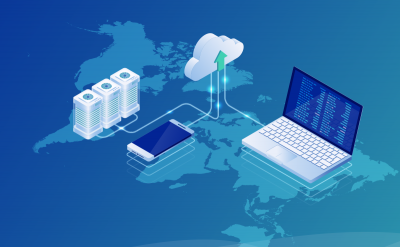Failure can never be an option when you have critical business data stored on your servers, but it’s something that you even can’t avoid. Disasters can be due to the natural or human cause but can result in major disruption across the complete region. It’s imperative that businesses be prepared when it comes to analyzing the damage and how well the business can recover during such cases? You need to have a complete disaster recovery plan in place when you have data in remote locations. Recently many regions around the world that have been major IT hubs had faced constant threats from naturally causing environmental disruption that could have affected the integrity of the data center operation. North America was one such region that had faced several wildfires, hurricanes, and earthquakes that resulted in many of the business to implement the disaster recovery plan. Even many cyber-attacks are now treating to make the data centers goes completely offline by affecting the power supply, electronic cooling systems, or sabotaging the complete infrastructure. With both natural and man-made threats that could completely disrupt the data center environment. Having a data center recovery solution has become imperative for businesses today that are thriving on the remote location data centers making them more susceptible to such attacks.
Here are six key strategies that the businesses should be prepared when it comes to the Data Recovery Plan
1. Optimize the power utilization
Power outages can be very long or very brief; most of the data centers have backup power that can last up to three hours. Data centers that face constant power outages have deployed different types of diesel generators to back up during the case of a longer duration of power outage also be careful when using different data center solutions. We need to be careful when it comes using the dummy load to test the different power generation because there power consumption differs. Instead of using your own utility as a backup power source using the data center to actually load to test your different generators.
2. Integrate the hybrid cloud strategy
If have adopted just the on-premises infrastructure, use the cloud as redundancy for local servers. Even if the business is having the jurisdictions or other concerns about the cloud using the cloud redundancy can still provide customer-facing visibility and show that your company is still able to provide during the cloud redundancy for the customer. Consider using the co-location if you are concerned with using the public cloud. Using hybrid cloud this way would mean that business can move their data during the disaster with the colocations operations in other regions that can pick up the slack. In regular time you can even benefit from the architecture by splitting the workloads that allow the balances to surge without reducing the service levels.
3. Planning for failing
Don’t rely on the single cloud vendor for providing service, cloud vendors despite having the enormous infrastructure capabilities they will have to face the failures for such cases. You have to sure operate your cloud presence in more than one region; if you’re using AWS, you might consider Azure or Google Cloud as the failover option.
4. Getting to know the vendor infrastructure
When doing disaster planning. We need to gain a deep understanding of each of the vendor’s infrastructure. For example, suppose you are using the web hosting provider and the backup recovery solutions for another web hosting provider, it’s imperative that you have decided that both of them aren’t just based on single data solution provider. If you have encountered a vendor unwilling to provide the infrastructure details, it’s always a better idea to choose a different vendor because that is the infrastructure to have complete data.
5. Backup for the cloud data
Backup has always been the greatest priority when we think of disaster recovery solutions. With the added need for a backup solution for business that introduces the solution for on-premises infrastructure. Many cloud services take responsibility for ensuring the security and availability of cloud-based back-up. Cloud vendors are susceptible to the distant and cyber-attacks as any other organizations, while most of the cloud vendors have assured the users that they have a strong backup solution but that would not enough for the business. Bring all your data down to local machines, synchronized at all times with them. Having a 3-2-1 rule can be better for business, where we make three copies of given data, two of them stored at the local solution and one of them on offsite location. When it comes to cloud solutions, you need to have three copies as it increases your organization resilience. Having a local copy can be added advantage during the network failure.
6. Service Level Agreements
Service Level Agreements aren’t just forced fields that can be used at any time. If any natural disaster strikes or an attacker manages to breach your systems, the existing service level agreements will not stop the disaster from happening. It would give greater leverage while suing the provider, but it won’t save your data or business operation because it could affect the complete business. Do not just accept it because you would have the SLA in place your protected. So legal document can’t just save you during such conditions of a natural disaster.
Conclusion
When we look towards different types of cyber-crime and data theft, they have been escalating at proportional rate for quite some time. CEOs, CIOs, and other level corporate decision-makers should be revisiting and potentially returning their disaster recovery and business continuation plans for greater risks of breaches and information compromise. At the same time, the business needs to be ready and vigilant about different Disaster recovery situations that are created when the systems fail, or services get disrupted. Over time, something that hasn’t changed for the business is the disaster recovery readiness that has been the lowest priority. With the cloud, colocation solutions bringing data distribution at the peak we need the business leaders to be ready for any such situation.
To know more, download latest whitepapers on data center solutions.






































































